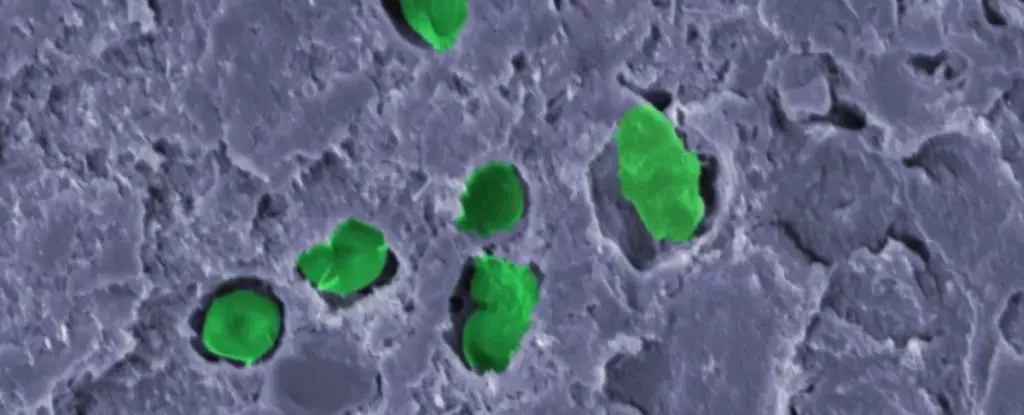Imagine a paint that not only beautifies the walls but also generates oxygen and reduces carbon dioxide levels in the air. This may sound like science fiction, but researchers at the University of Surrey in the UK have developed a groundbreaking biocoating called “Green Living Paint” that does just that. By incorporating desert-dwelling bacteria called Chroococcidiopsis cubana into the paint, scientists have created a sustainable material with the potential to revolutionize space travel and contribute to environmental sustainability efforts here on Earth.
Chroococcidiopsis cubana, a unique genus of bacteria, has proven its incredible adaptability to extreme environments. From the pitch-black depths of caves to the lower crust beneath the ocean floor, this bacterium thrives amidst adversity. Its special photosynthesis mechanism enables it to survive in areas with minimal light, making it well-suited for the harsh conditions on Mars. This cyanobacterium possesses the ability to convert carbon dioxide into organic compounds through photosynthesis while simultaneously releasing oxygen.
Inspired by the remarkable properties of Chroococcidiopsis cubana, the team led by microbiologist Simone Krings sought to develop a durable and ecological biocoating using these bacteria. The challenge lay in creating a matrix that would allow the bacteria to thrive while maintaining mechanical robustness. The researchers ingeniously mixed latex with nanoclay particles to achieve the desired properties. This innovative approach ensured the safe encapsulation of the bacteria within the biocoating.
To test the effectiveness of the Green Living Paint, the team closely monitored the biocoating’s performance over a 30-day period. Throughout the experiment, they observed consistent oxygen production of up to 0.4 grams per gram of biomass per day. This remarkable rate would equate to up to 400 grams of oxygen for every kilogram of paint over the course of a month. Additionally, the paint demonstrated the ability to absorb carbon dioxide, further improving the air quality within the habitat.
While the implications of Green Living Paint for future Mars missions are significant, the potential real-world applications of this biocoating extend far beyond the red planet. Considering the rising levels of greenhouse gases and the looming water shortage crisis, environmentally friendly and sustainable materials like Green Living Paint hold immense promise on Earth as well. By reducing water consumption and harnessing the power of photosynthesis, these biocoatings could aid in combating climate change and promoting a greener future.
It is important to note that Green Living Paint alone may not provide sufficient oxygen for a fully self-sustaining Mars habitat. The estimated 500 metric tons of oxygen required for a year-long mission would necessitate additional oxygen production methods. Nevertheless, every additional source of oxygen, no matter how small, plays a crucial role in reducing the burden of transporting oxygen from Earth. The utilization of Green Living Paint alongside other oxygen generation technologies could potentially make long-term space colonization more feasible.
The development of Green Living Paint marks a significant milestone in both space exploration and environmental science. Its potential to transform Mars habitats and contribute to sustainability efforts on Earth is truly staggering. As research in this field progresses, scientists must further explore the optimization of biocoatings, develop efficient oxygen generation methods, and continue to unlock the mysteries of Chroococcidiopsis cubana. With each new discovery, we inch closer to a future where mankind can inhabit and thrive in previously unimaginable environments. The legacy of Green Living Paint may redefine our understanding of both the red planet and our home planet, forever shaping the way we approach space exploration and ecological sustainability.


Leave a Reply